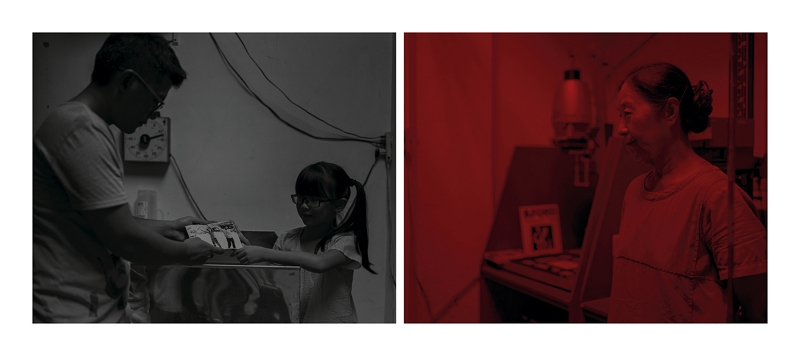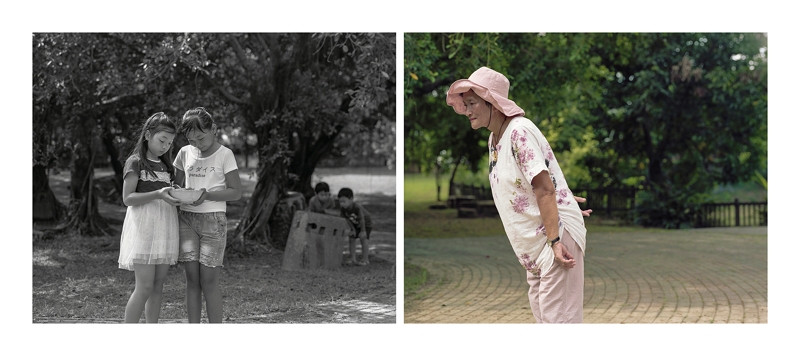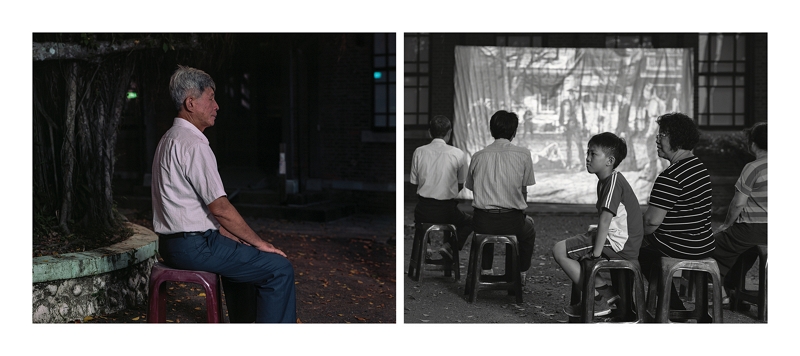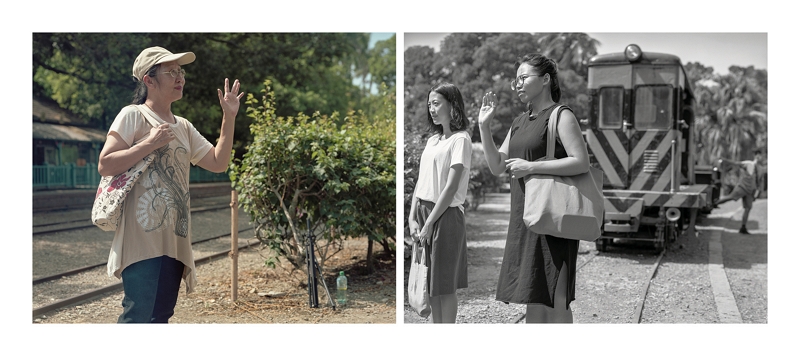How should we think about those photos that were not taken? How should we think about the relationship between photography and memory? Are photographs “evidence” of memories of the past?
When we speak about photographs, we are always talking about a certain moment in the past. The nature of photography, it seems, is to cause times past to reappear. However, there are unforgettable moments that are only stored in memory, and have not been recorded by photography or any other medium. These unrecorded, unforgettable moments are precisely the theme to which Chen Chin-pao has dedicated himself.
Chen began to pay attention to these memories that were never recorded after he was deeply touched by a sentence in the book L’Amant, by Marguerite Duras, which he read while studying in New York. “Who would have thought of such a thing? The photograph could only have been taken if someone could have known in advance how important it was to be in my life, … no one even knew of its existence. Except God.” This sentence about “photographs that were not taken” connected strongly with Chen’s life experiences, and thus opened up the opportunity to undertake a related photography project.
Reconstructing photography and memory
Chen began to devote attention to the relationship between photographs and memories in his Circumgyration Project. In the project, done when Chen was an art teacher in a primary school, through the performances of students on campus he sought to bring back those scenes that were unforgettable for these students yet had never been photographed. He collected worksheets with descriptions of unforgettable memories in writing or drawings made by students or their parents. He then had the students and their families pose for photographs to create images of these deeply inscribed memories.
Although one can say that at first glance this project is full of childlike fun and warmly takes viewers back to those memories, in fact it raises questions about the core of photography: What in the end is memory? What is reality? Chen Chin-pao was by no means using photography to record existing reality, but rather was using the text and images of the worksheets to reconstruct memories. Therefore, this series of photos by Chen is not about the photographer capturing existing reality, but is about trying to use photography to produce images that reflect his subjects’ memories themselves. In other words, the basis for these images is not reality, but the interpretation of memories or imagination. Beside the interpretation of memories inherent in the descriptions made in the worksheets, there is also the interpretation made by the photographer in composing the photographs and in posing the children and their families to reenact the scenes described.

Developing photographs —Cai-Liu Xinhui
Developing photographs—Cai-Liu Xinhui
When I was young, my father opened the first photo studio in Madou. Business was booming, and my mother routinely worked until very late helping out. Once I got up in the middle of the night, and saw my mother doing the final step of washing the photos in clean water. She was so tired she fell asleep and her face nearly plunged into the water. I decided I would help out, and asked my father to teach me how to develop photos in the darkroom. I learned very quickly.

Unblocking the Longhou spring —Chen Suzhen
Unblocking the Longhou spring—Chen Suzhen
I went to primary school near Shuikutou. At that time in Madou they were digging out the Longhou spring [which had been deliberately blocked some two centuries earlier], bringing up sugarcane grinding stones, large rocks and so on. People said that the water of Longhou had healing properties, and that Longhou soil could cure skin conditions. I often went with adults to Shuikutou and saw the amazing images that appeared in sediment that settled out of Longhou water poured into bowls. People flocked from all around to worship at Shuikutou, and the area was bubbling with activity. The Five Gods returned to Madou to build a temple! Today I give guided tours at Madou Old Port Cultural Park, introducing Madou’s culture and history and teaching people about the evolution of Shuikutou and Longhou. This brings back many memories of when I was small.

Outdoor Movie Screenings —Liang Maolong
Outdoor Movie Screenings—Liang Maolong
What I remember most about the Tsung-Yeh Sugar Factory is that in the 1960s, whenever there was a holiday like National Day or Taiwan Retrocession Day, films would be shown there for everyone to watch, in the Sun Yat-sen Hall or on the plaza. In those days there weren’t very many recreational activities, and the younger me would seize the opportunity to see a movie for free. I spent many a happy hour there and saw many films. Of these, Last Train from Gun Hill and John and Mary still dimly remain as beautiful memories, even though 40 or 50 years have passed since I saw them.

The Little Train —Zhong Guizhen
The Little Train—Zhong Guizhen
When I was young I visited sugar refineries in southern Taiwan. I even specially took a narrow-gauge train from Chiayi to the Suantou refinery to stay overnight. This little train was really interesting; sometimes men would jump off to urinate and then catch back up. I was lucky enough to marry into a family living in Zongye, where I could hear the little train’s whistle. When the train started moving, the air was filled with the intoxicating scent of sugarcane. Even more charmingly, hot water flowed through the drainage ditch in front of the village. We could often see the trains being assembled, and I feel nostalgic for the beautiful, stately wooden train stations. The Tsung-Yeh Sugar Factory was one of the better-designed refineries that I have seen, with the factory area separate from the administrative area. That’s why the part that hasbeen transformed into the Tsung-Yeh Arts and Cultural Center has such a calming atmosphere.











